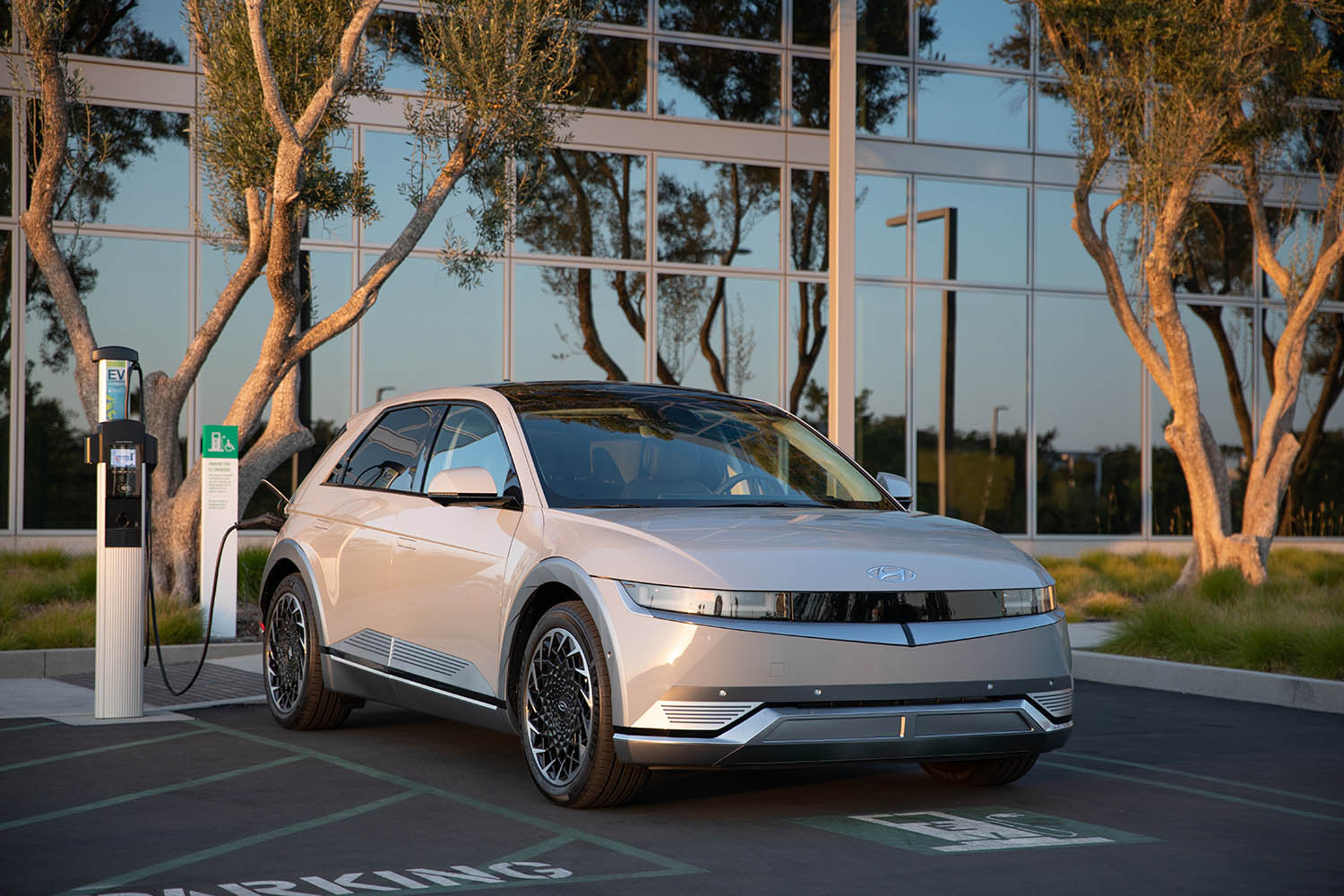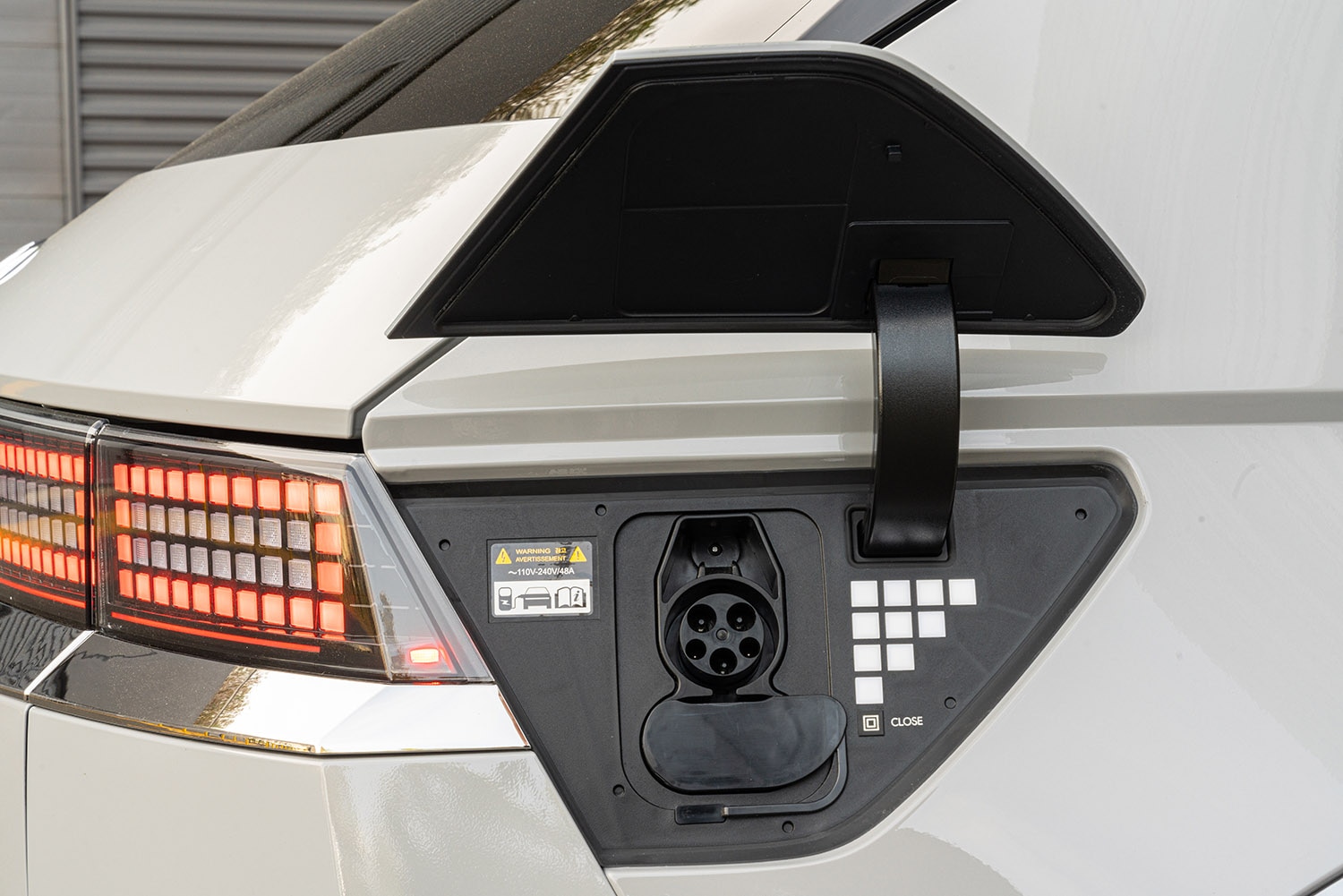EV Charging Levels Explained
Plugging in doesn't have to be complicated.
 Hyundai
Hyundai
If you're shopping for an electric vehicle (EV) for the first time, you might encounter a lot of new tech terms. Among the most important to understand are the different levels of EV charging. As of August 2023, there are three charging levels available. Level 1 delivers the slowest charge rate and Level 3 the fastest, while Level 2 is often the type found in home chargers.
 Hyundai
Hyundai
Level 1 Charging
Level 1 charging is the simplest — and slowest — way to recharge an EV. A portable Level 1 charger cable is often included with the sale or lease of an EV. One end of the charger cable connects to the vehicle's charge port and the other plugs into a standard 120-volt household outlet.
Then you wait — and wait.
With a meager output of about 1 kW, Level 1 charging is best used in a pinch or when a car will be plugged in for a long time, since it adds only about 2 to 5 miles of range per hour of charging, according to the U.S. Department of Transportation.
At that rate, it will take quite a while to fully recharge a typical EV's battery. For example, if you use a Level 1 charger with the Hyundai Ioniq 5's SE, SEL, or Limited models (which have the Ioniq's longer-range battery), it will take about 68 hours to recharge your battery from 10% to 100%.
While that's probably not going to cut it for most EV drivers, Level 1 charging might be a reasonable option for plug-in hybrid vehicle(PHEV) owners. Many PHEVs can be recharged overnight with a Level 1 charger.
 Hyundai
Hyundai
Level 2 Charging
Level 2 charging is much faster than Level 1 and can be done either at a public Level 2 charging station or at home, though setting up a Level 2 charger at home requires the installation of a dedicated 240-volt AC circuit.
Regardless of where you access it, a Level 2 charger puts out between 7 and 19 kW of power, according to the U.S. Department of Transportation, which vastly improves the rate of charge. These chargers can add at least 10 miles of range per hour of charge.
Level 2 chargers can be convenient for charging overnight or when your car is parked while you're at work. In the example of the Hyundai Ioniq 5 SE, SEL, or Limited, recharging from 10% to 100% will take about seven hours with a Level 2 charger. Full EVs aren't the only beneficiary of Level 2 chargers, though. Plug-in hybrids can take advantage of the faster speeds as well.
 Manuel Carrillo III | Capital One
Manuel Carrillo III | Capital One
Level 3 Charging
If you're on a longer road trip, you'll likely need juice (and range) in a hurry. For that, a Level 3 station makes the most sense. Commonly referred to as DC fast charging, Level 3 is the fastest charging option currently available. Because Level 3 chargers use direct current rather than a home charger's alternating current, Level 3 stations are available primarily in public locations and typically require a form of payment, likely via a credit card reader or through an app.
A Level 3 charger can deliver speeds up to 350 kW, according to the U.S. Department of Transportation, and can add between 180 and 240 miles of range per hour of charge. However, not all Level 3 chargers work with all EVs. Some plug-in hybrids, for example, don't support these systems, and some EVs, such as the Nissan Leaf and all Teslas, use a different plug. Be sure to know what kind of connector your vehicle has before arriving at a Level 3 charging station.
If your vehicle is compatible, however, you should enjoy dramatically faster charging. In the case of the Hyundai Ioniq 5, you may need as little as 18 minutes to charge from 10% to 80%. It's important to note, however, that Level 3 chargers generally operate at full speed only until the battery is 80% charged. Charging slows after that to prevent long-term damage or premature wear of the battery.
Written by humans.
Edited by humans.
 Sami Haj-Assaad
Sami Haj-AssaadSami Haj-Assaad is an award-winning automotive journalist who has contributed to several automotive, electric vehicle, luxury lifestyle, and technology publications. His work isn't just limited to the written word, as he's also hosted YouTube videos and podcasts. Having grown up in the '90s, he has a strong sense of attachment to that era's style, though he also loves to geek out about the modern, futuristic tech and powertrains rolling out today.
Related articles
View more related articles